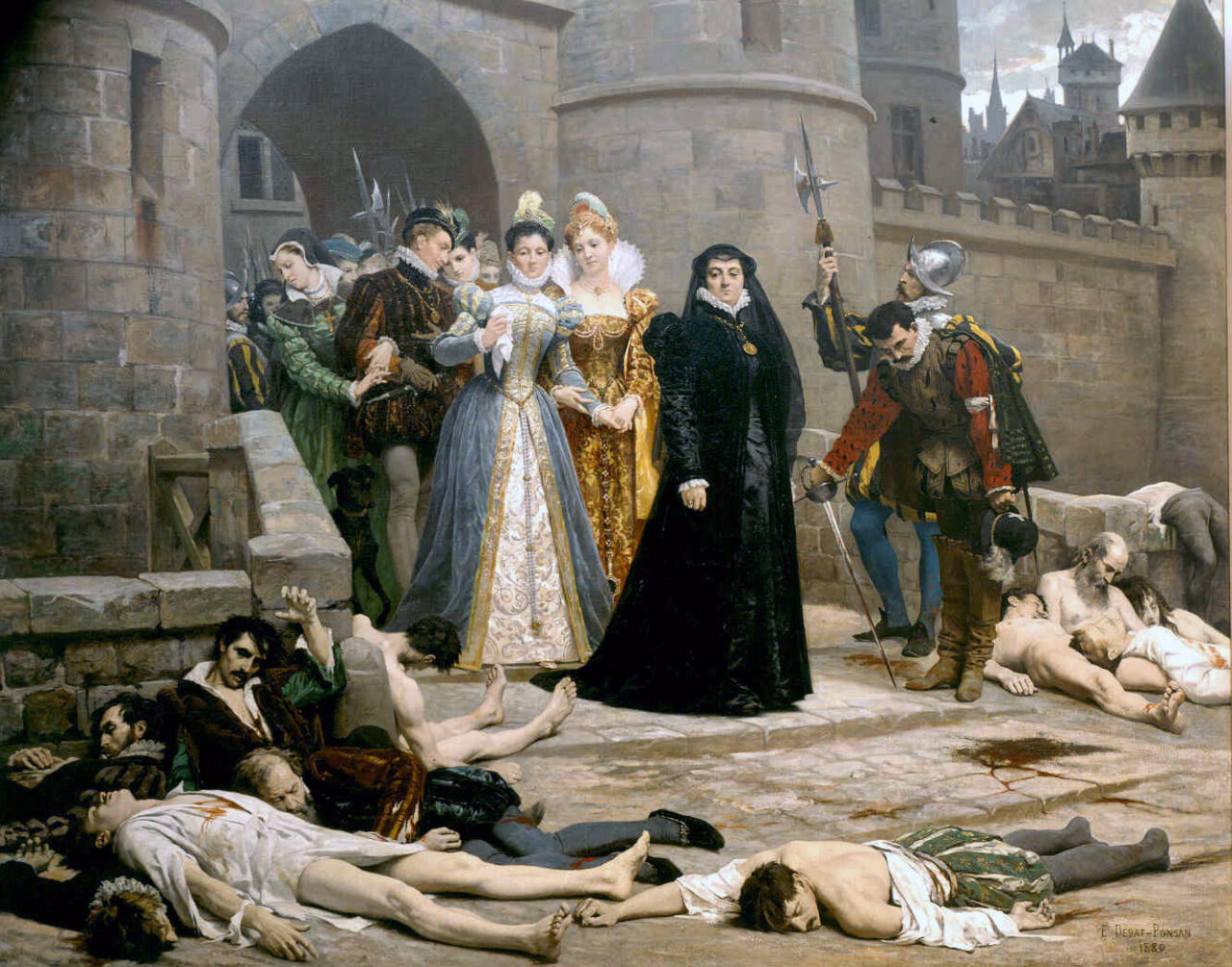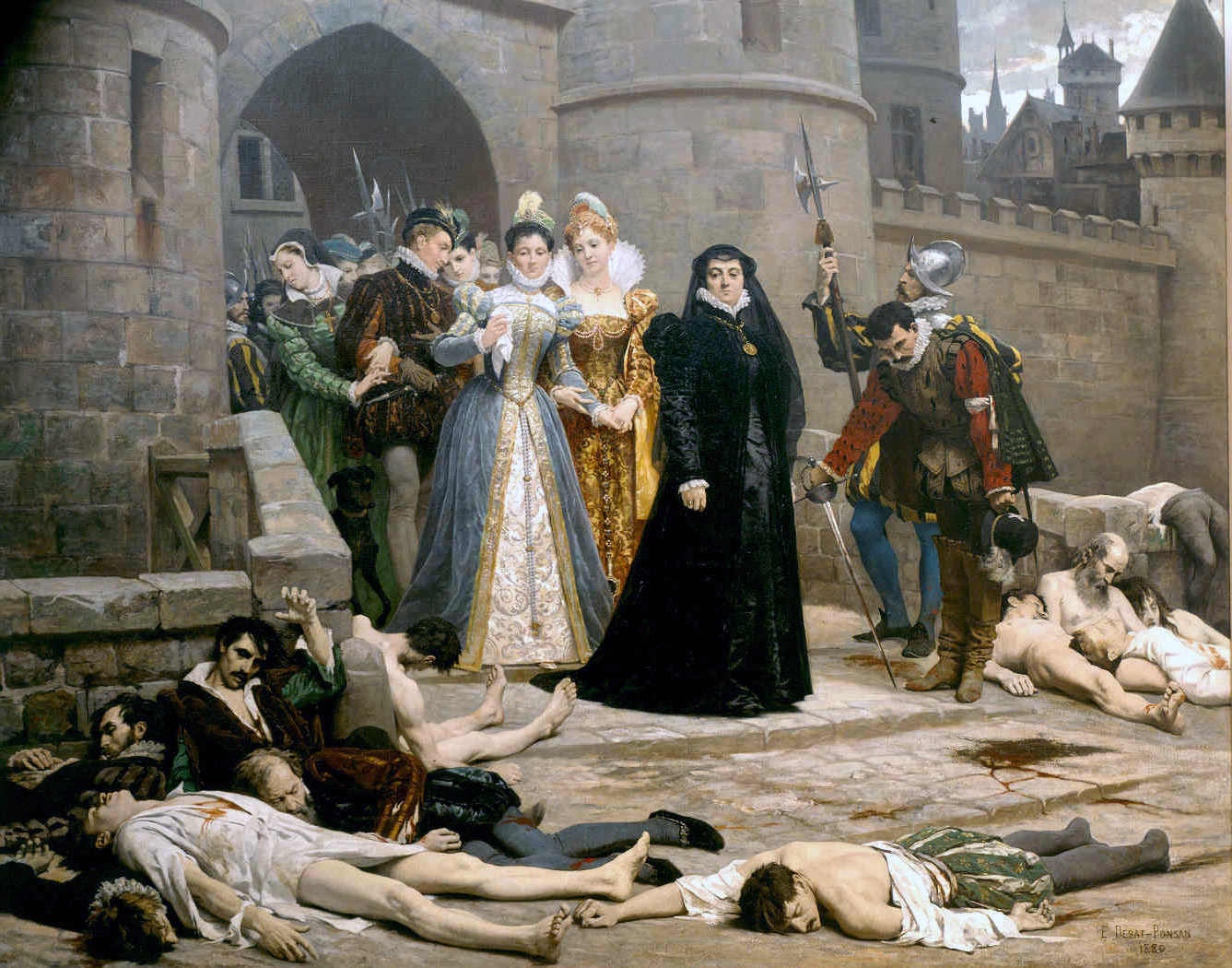
On the night of August 24, 1572, an event occurred that went down in history as the St. Bartholomew’s Day Massacre, also known as the Night of Saint Bartholomew — the mass murder of Huguenots by Catholics in Paris.
Let’s leave the tales of Huguenot propaganda to the writers and historians of the century before last, about Catherine de Medici allegedly planning the massacre of Protestants back in 1564, when she met with the envoy of the Spanish king, the Duke of Alba, during the “Grand Journey” of the court in France.
In fact, for a long time the regent adhered to a policy of reconciliation, being forced to maneuver between the growing strength of the Protestants led by the Prince of Condé and the French admiral Gaspard de Coligny, who, of course, were supported by England, and the clan of the Lorraine Dukes of Guise, the leaders of the die-hard Catholics, who were supported by the Spanish king Philip II.
The massacre took place six days after the wedding of the queen’s sister Margaret to the Protestant Henry of Navarre, which had brought many of the wealthiest and most prominent Huguenots to predominantly Catholic Paris.
There is a well-reasoned view that the Night of St. Bartholomew was instigated by Catherine de’ Medici with one specific goal in mind: to use the House of Guise to remove the leaders of the French Protestants, led by Admiral Coligny, who were pushing France into a suicidal war with Spain.
But as often happens, the crowd, including the inhabitants of the notorious “Court of Miracles”, seized control of the situation. Shortly before dawn on August 24, 1572, the bell of the church of Saint-Germain-l’Auxerrois gave the signal for the operation to begin.
At the last moment, Queen Catherine and the Duke of Anjou became frightened and ordered everything to be called off, but the mechanism of events had been set in motion and it was already impossible to stop it.
The first thing Henri de Guise did was to visit the wounded Coligny with his detachment. The old admiral was killed, thrown out of a window and beheaded, and his body was dragged through the streets. Then the killings began in the Louvre and throughout the city. Teligny, La Rochefoucauld, Pardaillan and others were killed. The King of Navarre and the younger Condé saved their lives by renouncing Calvinism. Some other prominent Protestants managed to obtain mercy or escape.
Not only the royal troops and the clientele of the Guises took part in the massacre, but, most importantly, the initiative population of Paris, inflamed by Catholic propaganda, who already “loved” the Huguenots for all their performances during the 10 years of civil wars.
The event clearly got out of the control of the initiators. The good Parisians, full of enthusiasm, decided that since the order was to liquidate the leaders of the heretics, there was no need to stand on ceremony with the rest — including the elderly, women and children. The royal order to stop the killings had no effect, the slaughter continued for several days. In total, 2 to 3 thousand people were stabbed, shot and drowned in the Seine in Paris.
How many of them were not quite Huguenots and not at all Huguenots, exterminated by faithful Catholics on the sly for selfish reasons, is impossible to determine.
Moreover, under the auspices of the massacre of Catholics and Huguenots, many Parisians made their business deals, solving personal problems. For example, the notorious Louis Bussy d’Amboise, who stabbed a relative with whom his father had a family dispute.
In fairness, the Protestants were not meek lambs and, when possible, resisted the Catholic troops. In the Three Kings Inn, three Huguenots held the defense for several hours according to all the rules of military art, Catholics were able to take it only by the 8th assault, entering simultaneously from the doors, windows and roof.
At the same time, the attackers lost 12 people killed and 18 wounded, and the total number of besiegers by the last assault reached two hundred people. And this is against THREE Protestants, who by that time had almost run out of gunpowder and bullets.
The number of victims is still a subject of debate among historians, however, according to most of them, the number varies from 5,000 to 30,000 people. Then pogroms swept through other cities of France, taking the lives of several thousand more people.
After the St. Bartholomew’s Day massacre, about 200,000 Huguenots fled to neighboring countries. England, Poland, and the German duchies expressed their displeasure at such an outrageous outbreak of violence.
Russian Tsar Ivan the Terrible also condemned such treatment of the people. He wrote to the father-in-law of Charles IX, Emperor Maximilian II: “And that, dear brother, do you grieve over the bloodshed that occurred in the kingdom of the King of France, several thousand, even infants, were killed; it is fitting for a peasant sovereign to grieve that the King of France committed such inhumanity against so many people and shed so much blood without reason.”






